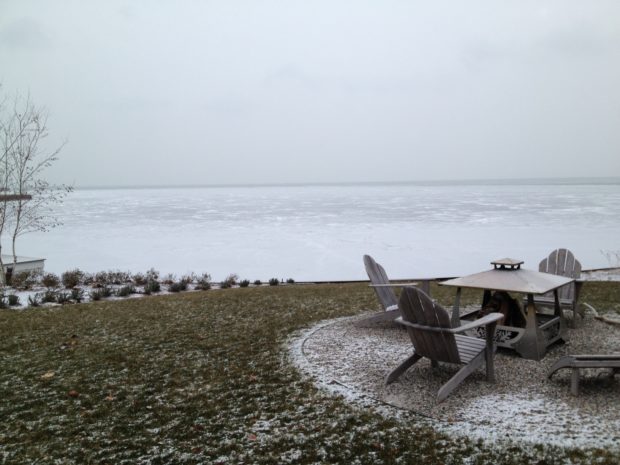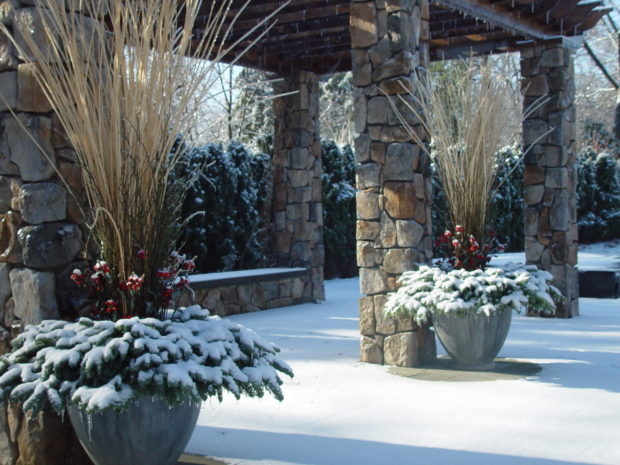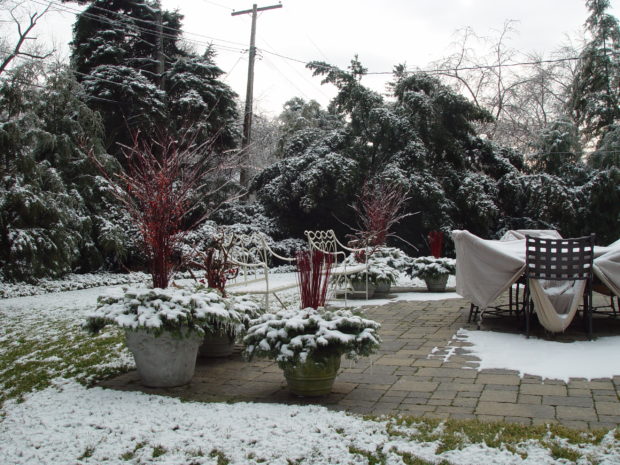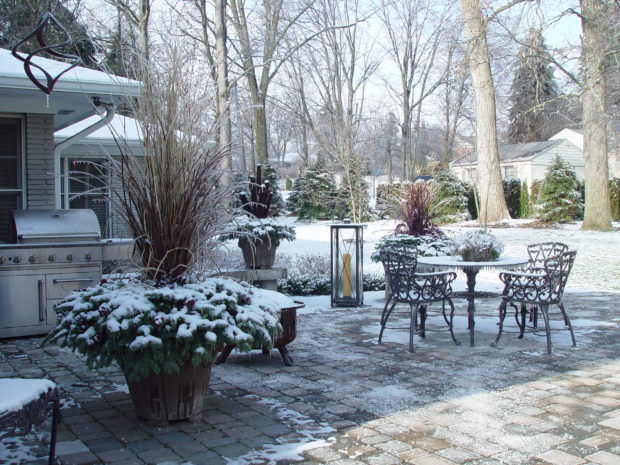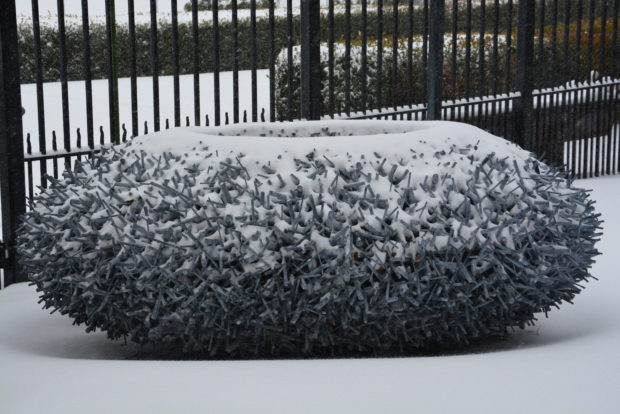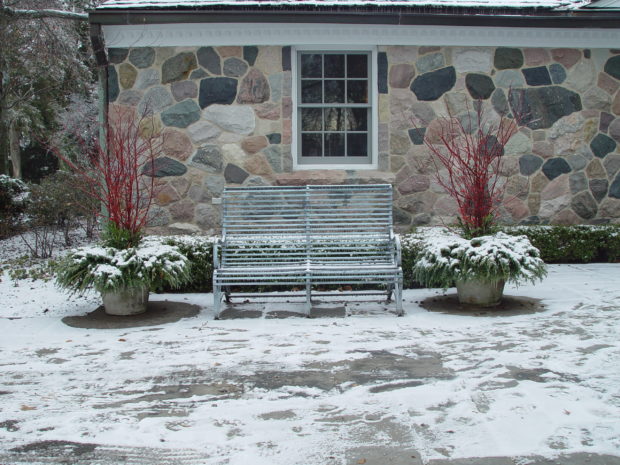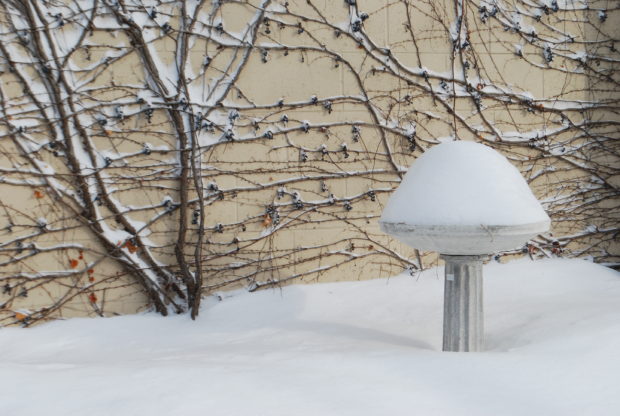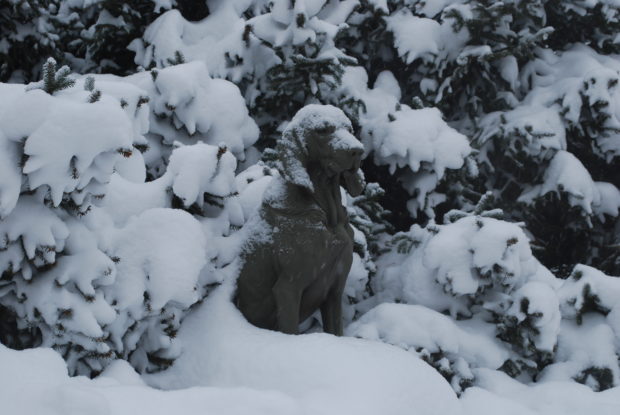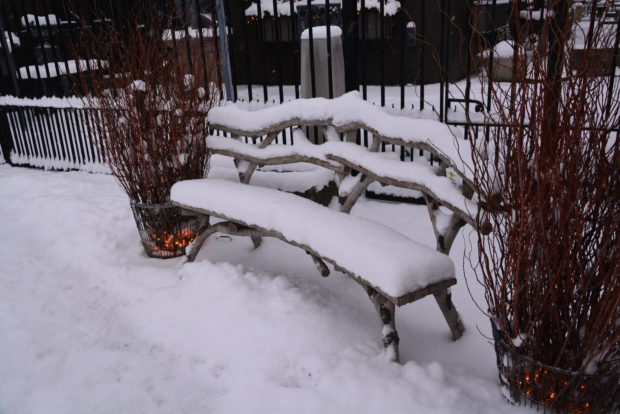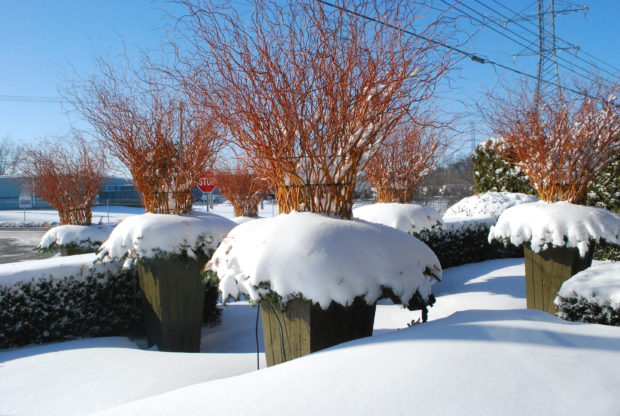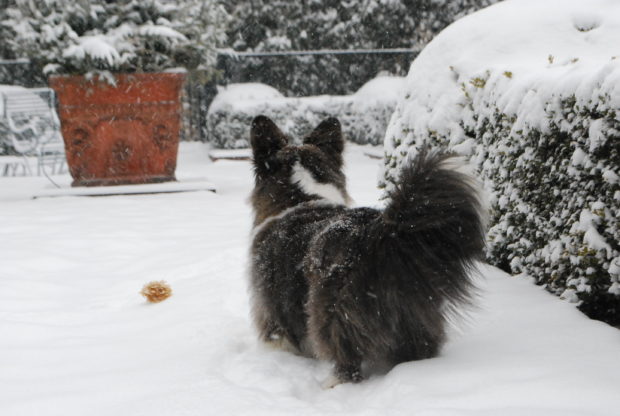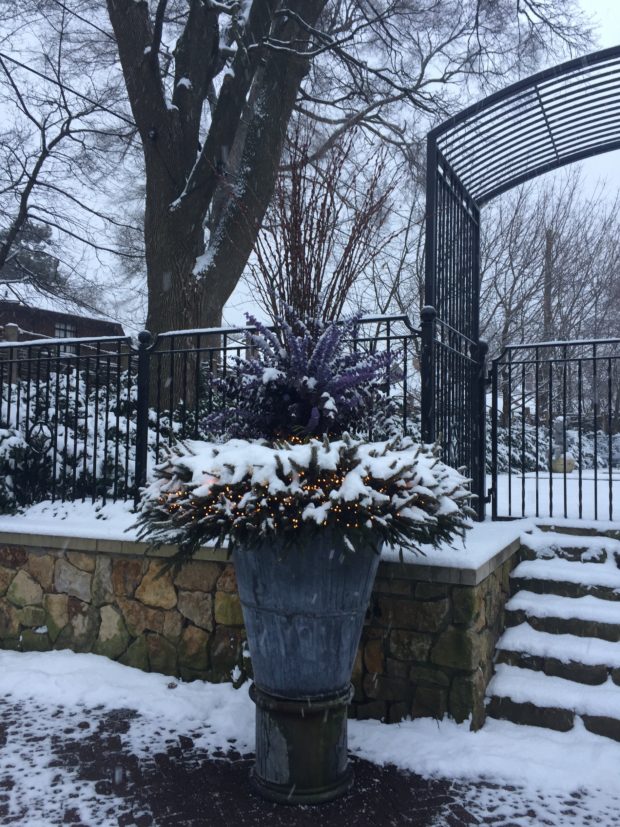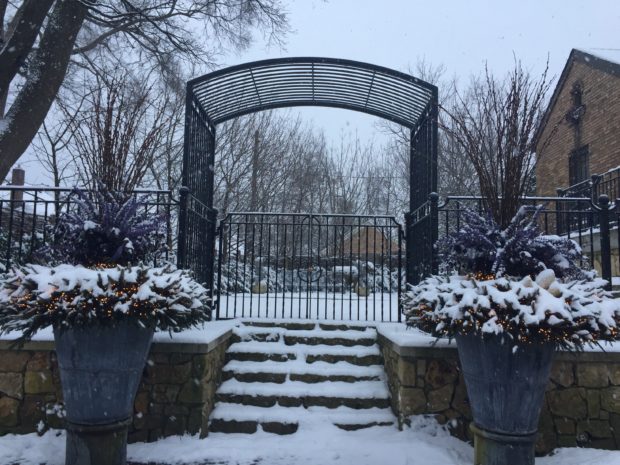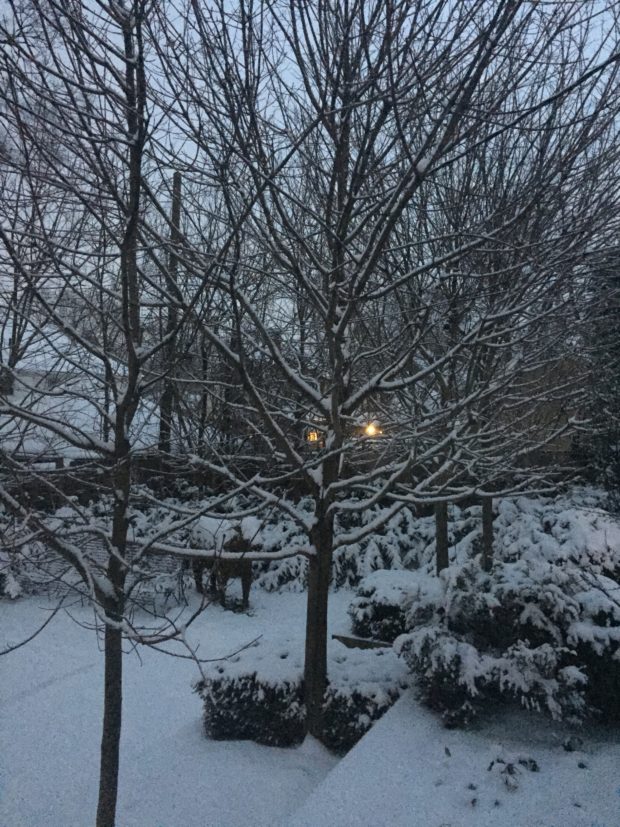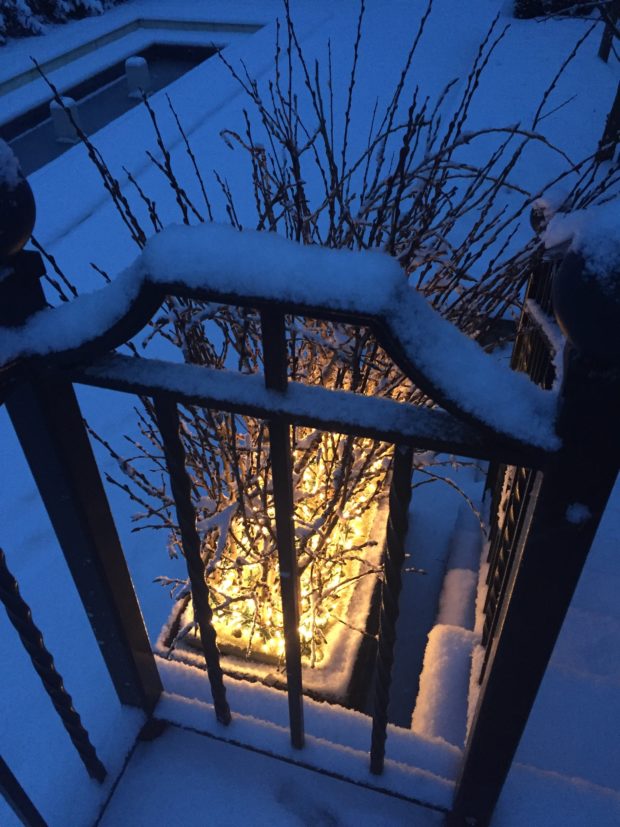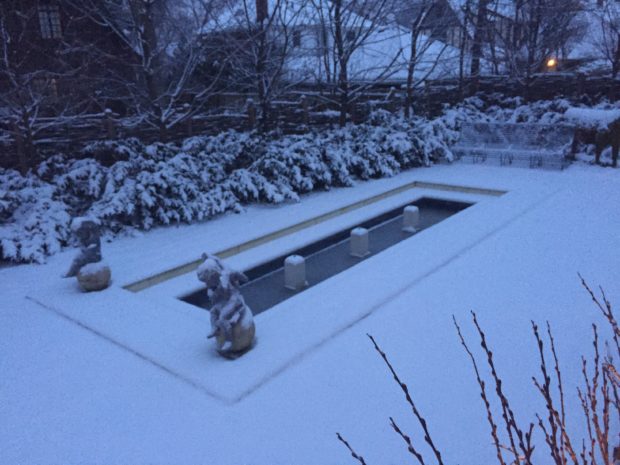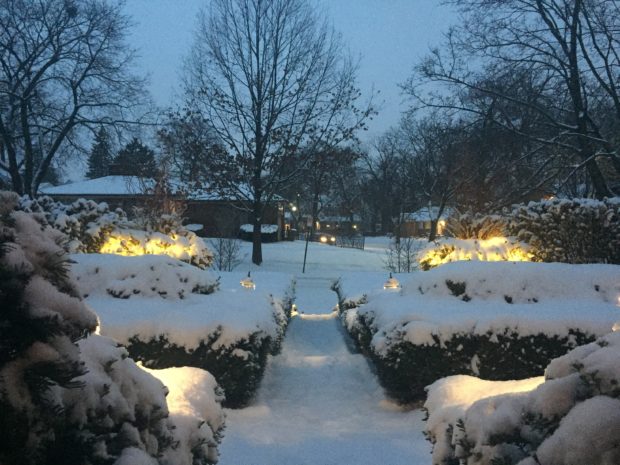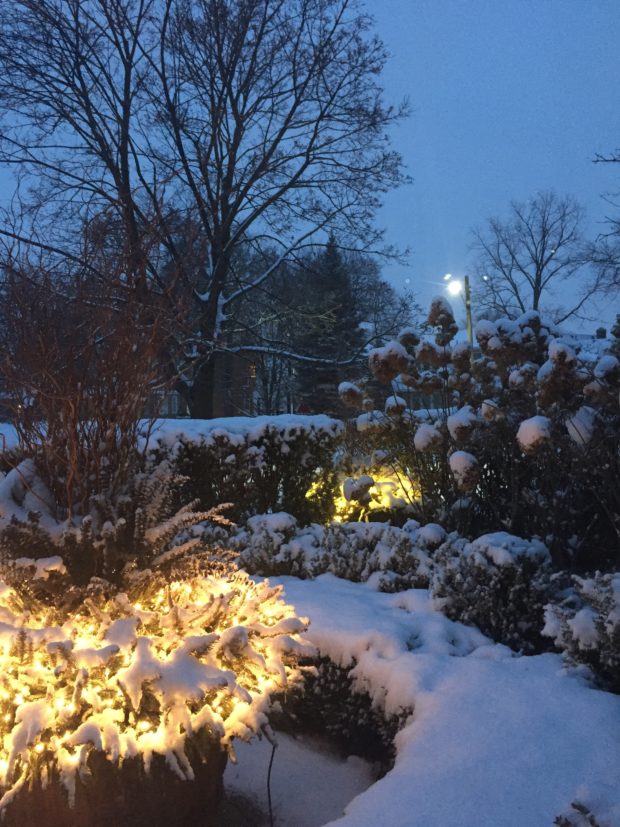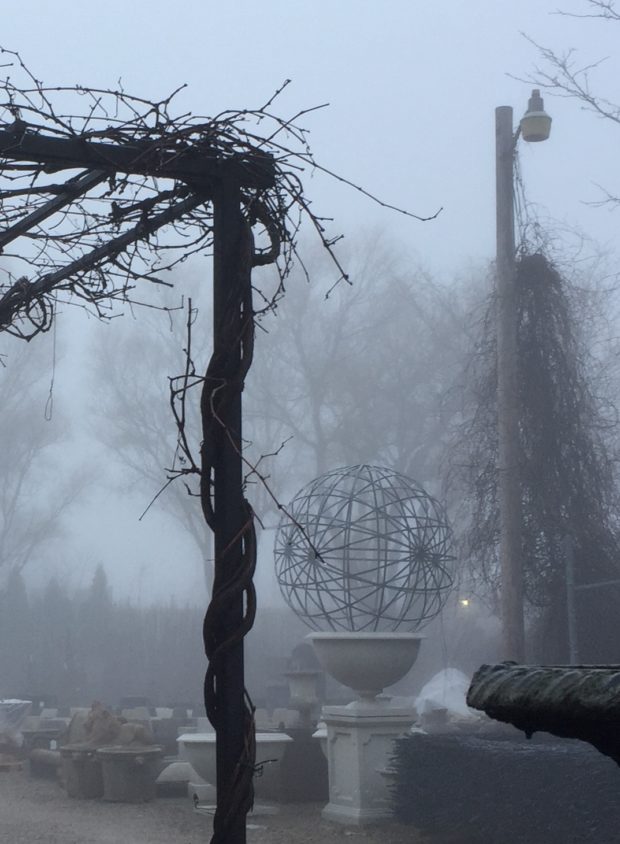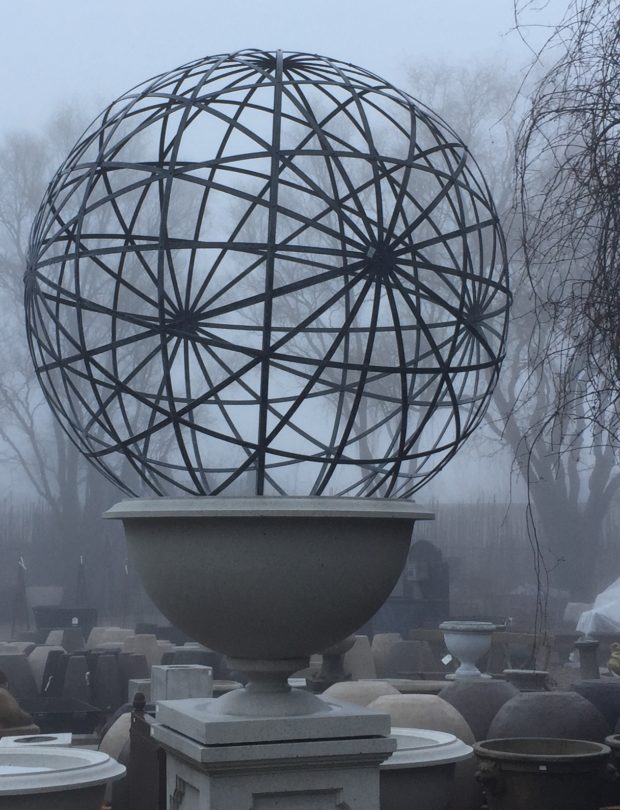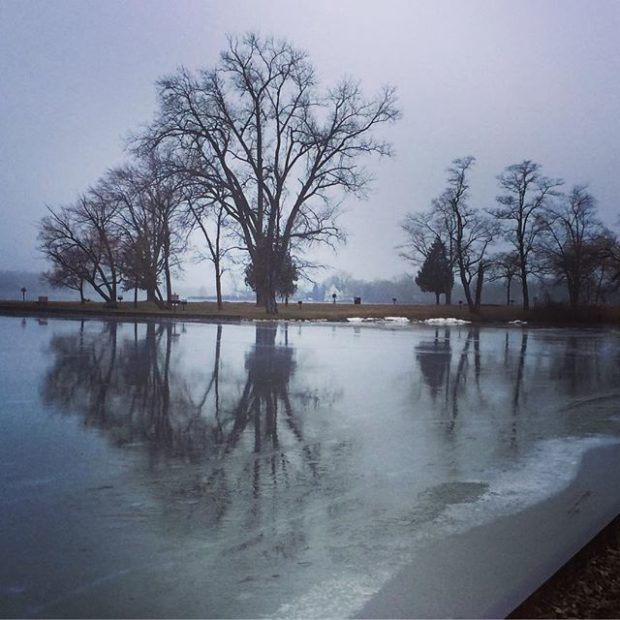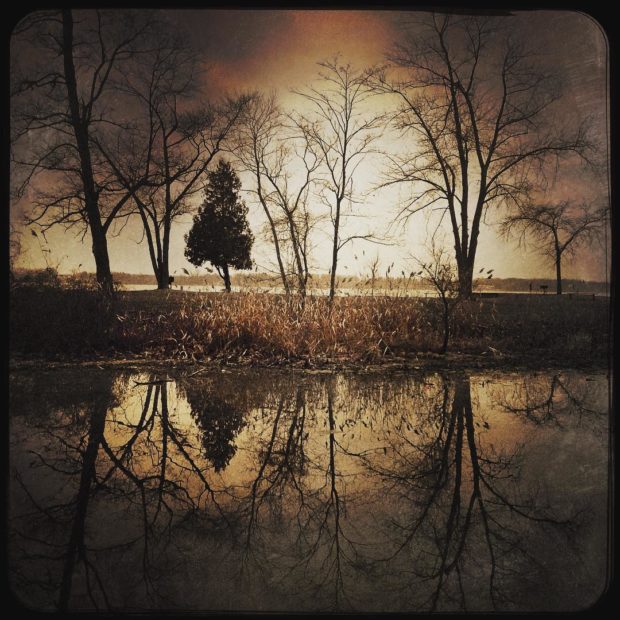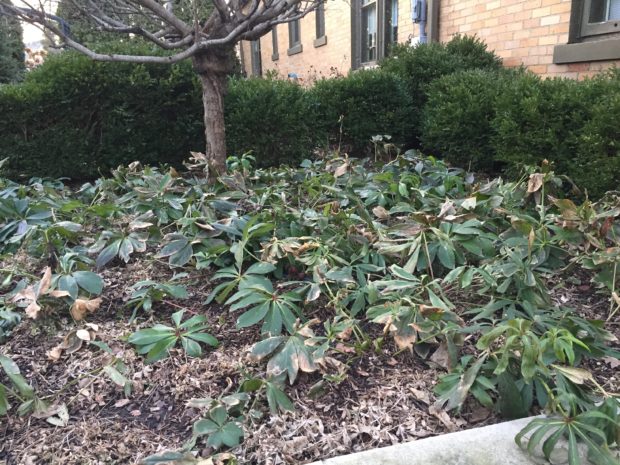 Plants are very specific about what soil, light and water conditions they need to thrive. Any gardener who has moved a sulking plant around 3 or 4 times before striking pay dirt understands this. It is simple to spot a plant that is unhappy. Figuring out the cause of the trouble can be tough, as there are so many factors that come in to play. There are those plants, in defiance of every good intention and effort to find them a suitable home, that fail to prosper. I have killed outright plenty of plants. Given that every plant has a strong will to live and reproduce, those failures are frustrating and embarrassing. Figuring out what a plant needs to thrive is 2 parts science, 2 parts luck, and 6 parts good instincts. The hellebores in the above picture look unhappy, as they always do in February. They like the filtered sun, protection from wind, the friable soil and regular moisture that is available to them here in the growing season. They have what they need to thrive. What they do not like in February is the cold. Before any plant in a Michigan garden can thrive, it has to be able to survive our winters.
Plants are very specific about what soil, light and water conditions they need to thrive. Any gardener who has moved a sulking plant around 3 or 4 times before striking pay dirt understands this. It is simple to spot a plant that is unhappy. Figuring out the cause of the trouble can be tough, as there are so many factors that come in to play. There are those plants, in defiance of every good intention and effort to find them a suitable home, that fail to prosper. I have killed outright plenty of plants. Given that every plant has a strong will to live and reproduce, those failures are frustrating and embarrassing. Figuring out what a plant needs to thrive is 2 parts science, 2 parts luck, and 6 parts good instincts. The hellebores in the above picture look unhappy, as they always do in February. They like the filtered sun, protection from wind, the friable soil and regular moisture that is available to them here in the growing season. They have what they need to thrive. What they do not like in February is the cold. Before any plant in a Michigan garden can thrive, it has to be able to survive our winters.
Plant hardiness zones indicate a worst case low temperature for different parts of the country. The USDA, in compiling data from weather stations, and factoring in mitigating circumstances which can influence low temperatures, has produced a plant hardiness map. Interested in that map making process? mapping plant hardiness It gives gardeners an idea of what the lowest average winter temperature can be in a given area. The hardiness map is a guide that can help gardeners select plants which are appropriate for their area. My area is at best a zone 6, and at worst, a zone 5b. This means that plants that are able to withstand low temperatures in the -15 to -10 degrees should be able to survive in my garden. That includes these ratty looking hellebores. Last year’s foliage may be burned from cold and wind, but they are very much alive, and waiting for some signs of spring.
 The key to survival in very cold regions is dependent on that plant slowly going dormant over the metabolic slow down that we call fall, and a constant deep dormancy throughout the period of very cold weather. What the hardiness zone map does not provide for are weather events out of the norm. We have had temperatures in the 50’s and 60’s for a week. On February 18, the record high for that day of 62 degrees set in 1976 was eclipsed by a 65 degree day. One or two days of weather that warm might not affect any plants that are still dormant. The frost is deep in the ground. But the days are staying warm. We have a low of 56 forecast for overnight tonight. Now I am starting to fret. It is too warm, way too early. Under that winter foliage, I see signs that the hellebore flower stalks have begun to emerge.
The key to survival in very cold regions is dependent on that plant slowly going dormant over the metabolic slow down that we call fall, and a constant deep dormancy throughout the period of very cold weather. What the hardiness zone map does not provide for are weather events out of the norm. We have had temperatures in the 50’s and 60’s for a week. On February 18, the record high for that day of 62 degrees set in 1976 was eclipsed by a 65 degree day. One or two days of weather that warm might not affect any plants that are still dormant. The frost is deep in the ground. But the days are staying warm. We have a low of 56 forecast for overnight tonight. Now I am starting to fret. It is too warm, way too early. Under that winter foliage, I see signs that the hellebore flower stalks have begun to emerge.
 A plant breaks dormancy for a constellation of reasons. Longer day length and warming temperatures are key. No plant reacts instantly to a brief change in conditions. But a change that persists is an invitation to wake up. Hellebores are greatly prized by gardeners everywhere. I do favor helleborus orientalis hybrids for my zone. This group of hellebores, now known as helleborus hybridus, are bred from hellebores commonly known as Lenten roses. This group generally begins blooming in April in my zone 6 garden. Hellebore hybrids featuring the genes of Helleborus niger, commonly known as the Christmas rose, naturally bloom at a time which is winter in my garden. Do I have inter generic hellebores in my garden that would prosper better in zones further south? Of course I do. I am always pushing my luck. I have had great success growing plants marginal to my zone. But nature is unpredictable. Nor does she care a whit for me and my love for my garden.
A plant breaks dormancy for a constellation of reasons. Longer day length and warming temperatures are key. No plant reacts instantly to a brief change in conditions. But a change that persists is an invitation to wake up. Hellebores are greatly prized by gardeners everywhere. I do favor helleborus orientalis hybrids for my zone. This group of hellebores, now known as helleborus hybridus, are bred from hellebores commonly known as Lenten roses. This group generally begins blooming in April in my zone 6 garden. Hellebore hybrids featuring the genes of Helleborus niger, commonly known as the Christmas rose, naturally bloom at a time which is winter in my garden. Do I have inter generic hellebores in my garden that would prosper better in zones further south? Of course I do. I am always pushing my luck. I have had great success growing plants marginal to my zone. But nature is unpredictable. Nor does she care a whit for me and my love for my garden.
 Our bitter 2014 winter turned my zone 6 into a battle zone 4. None of my magnolias bloomed. My parrotias sustained extensive die back to their upper branches. My roses were killed back to within a foot of the ground plane. My clematis sputtered. My 20 year old boxwood had unbearable damage. It was a sobering experience, to say the least. Any plant marginal to my plant hardiness zone suffered damage of one sort or another. The winter of 2015 might have been worse. On February 20, 2015, the temperature in Roscommon Michigan was -39 degrees. The statewide average for that day was 18.5 degrees below zero. The damage done to evergreens these two back to back vicious winters was extensive. But those plants that were safely dormant managed to survive. The snow drops showing their faces yesterday worry me. 65 degrees in February is an anomaly. The cold weather will return. How much cold can their flowers endure?
Our bitter 2014 winter turned my zone 6 into a battle zone 4. None of my magnolias bloomed. My parrotias sustained extensive die back to their upper branches. My roses were killed back to within a foot of the ground plane. My clematis sputtered. My 20 year old boxwood had unbearable damage. It was a sobering experience, to say the least. Any plant marginal to my plant hardiness zone suffered damage of one sort or another. The winter of 2015 might have been worse. On February 20, 2015, the temperature in Roscommon Michigan was -39 degrees. The statewide average for that day was 18.5 degrees below zero. The damage done to evergreens these two back to back vicious winters was extensive. But those plants that were safely dormant managed to survive. The snow drops showing their faces yesterday worry me. 65 degrees in February is an anomaly. The cold weather will return. How much cold can their flowers endure?
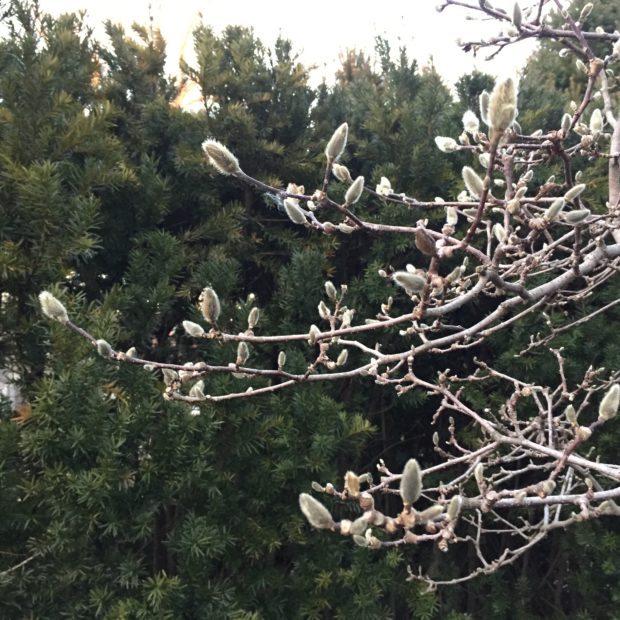 Of course I am anxiously checking all of my early spring blooming plants. This magnolia stellata was a 2 foot tall tree the day I bought my house twenty some years ago. It has prospered where it was planted. It did not bloom in either 2014 or 2015. Its hardiness was sorely tested by a pair of bad winters. The flowering in 2016 was a happening. I am trying to decide if our warm weather is encouraging the buds to swell. Not that I could intervene. Mother nature bats last. I am reading we have some night temperatures in early March in the teens. Though I am ready to wash my hands of winter at the end of February, March is a winter month for us. Any early spring plant which is breaking dormancy right now may not fare so well in March. This is more a worry than a certainty.
Of course I am anxiously checking all of my early spring blooming plants. This magnolia stellata was a 2 foot tall tree the day I bought my house twenty some years ago. It has prospered where it was planted. It did not bloom in either 2014 or 2015. Its hardiness was sorely tested by a pair of bad winters. The flowering in 2016 was a happening. I am trying to decide if our warm weather is encouraging the buds to swell. Not that I could intervene. Mother nature bats last. I am reading we have some night temperatures in early March in the teens. Though I am ready to wash my hands of winter at the end of February, March is a winter month for us. Any early spring plant which is breaking dormancy right now may not fare so well in March. This is more a worry than a certainty.
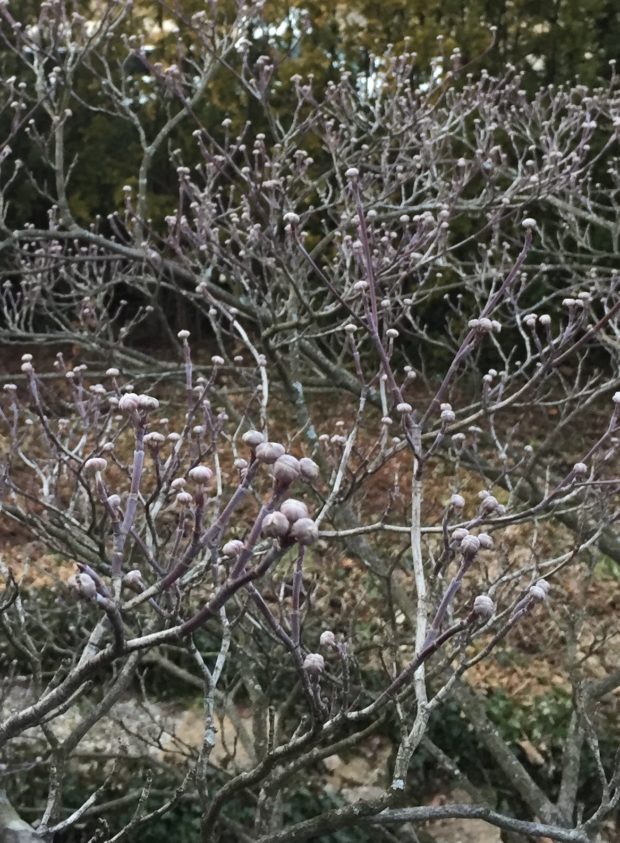 Late this past summer, I replanted my rose garden. Though I know there is a limit to their hardiness in my zone, it is better for me to start over, than to do without. That was a personal decision, not a decision driven by a plant hardiness map. As for the dogwoods, I hope they will be able to endure a freakish warm spell in the middle of winter. No small part of the winter landscape are plants that endure.
Late this past summer, I replanted my rose garden. Though I know there is a limit to their hardiness in my zone, it is better for me to start over, than to do without. That was a personal decision, not a decision driven by a plant hardiness map. As for the dogwoods, I hope they will be able to endure a freakish warm spell in the middle of winter. No small part of the winter landscape are plants that endure.

